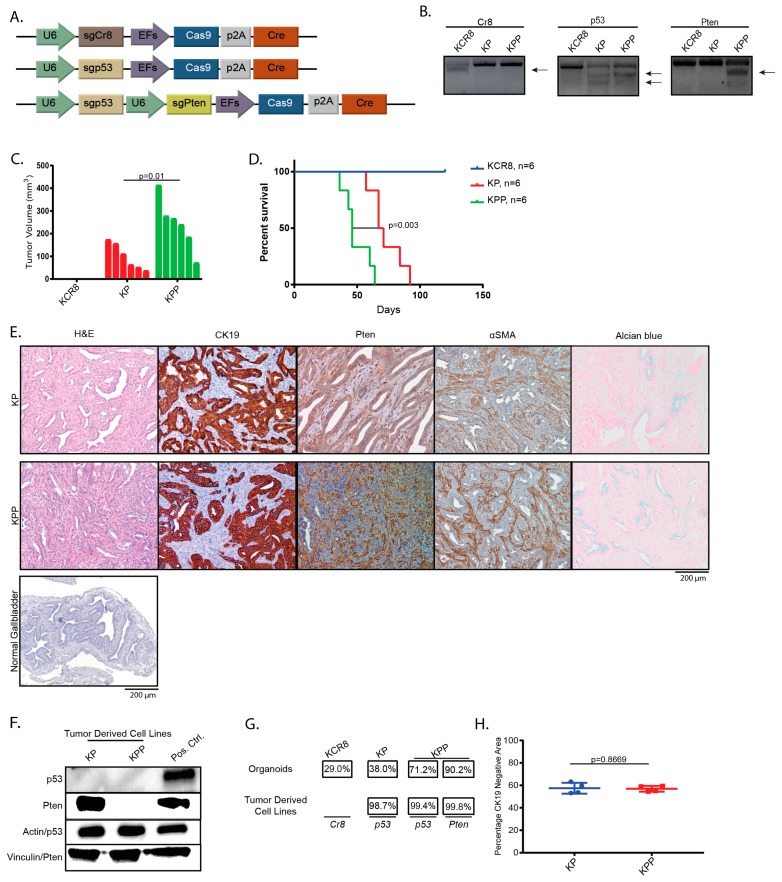Figure 2.
Genetically modified gallbladder organoids can give rise to gallbladder cancer (GBC) that resembles the human disease. (A) Schematic of plasmids used to transfect gallbladder organoids. Plasmids contain Cre recombinase, Cas9, and the respective sgRNA(s). (B) T7 endonuclease assay confirming cleavage after transfection and selection with blasticidin, first column: KCR8 organoids, second column: KP organoids, and third column: KPP organoids; arrows indicate cleaved bands. (C) Tumor volume 32 days after organoid implantation. No tumor development occurred in mice transplanted with KCR8 organoids during the four-month observation period. (D) Kaplan-Meyer curves of mice transplanted with KCR8, KP, and KPP organoids. Transplantation with KP and KPP organoids led to rapid tumor development (median survival: 69 days and 46 days for the KP and KPP cohorts, respectively). (E) Histological characteristics of GBC tumors derived from KP and KPP organoids. H&E staining of both genotypes shows GBCs classified as adenocarcinomas. IHC for CK19 confirms ductal differentiation and PTEN IHC detects loss of PTEN expression in sgPten-bearing epithelial tumor cells, but not in the surrounding stroma cells. IHC for αSMA confirms the presence of cancer-associated fibroblasts. Normal gallbladder tissue (H&E) for comparison. (F) Loss of p53 and PTEN confirmed on tumor-derived cell lines of the respective genotypes by immunoblotting. KCR8 organoids served as positive control. (G) Frequency of indels in the respective loci in preinjection organoids and in tumor derived cell lines shows enrichment of p53- and PTEN alterations during tumor development. (H) The relative stromal content of KP and KPP derived tumors (considering CK19 negative area as a surrogate for the relative stromal content) did not differ significantly (57.44% and 56.97%, respectively; p > 0.8669).

